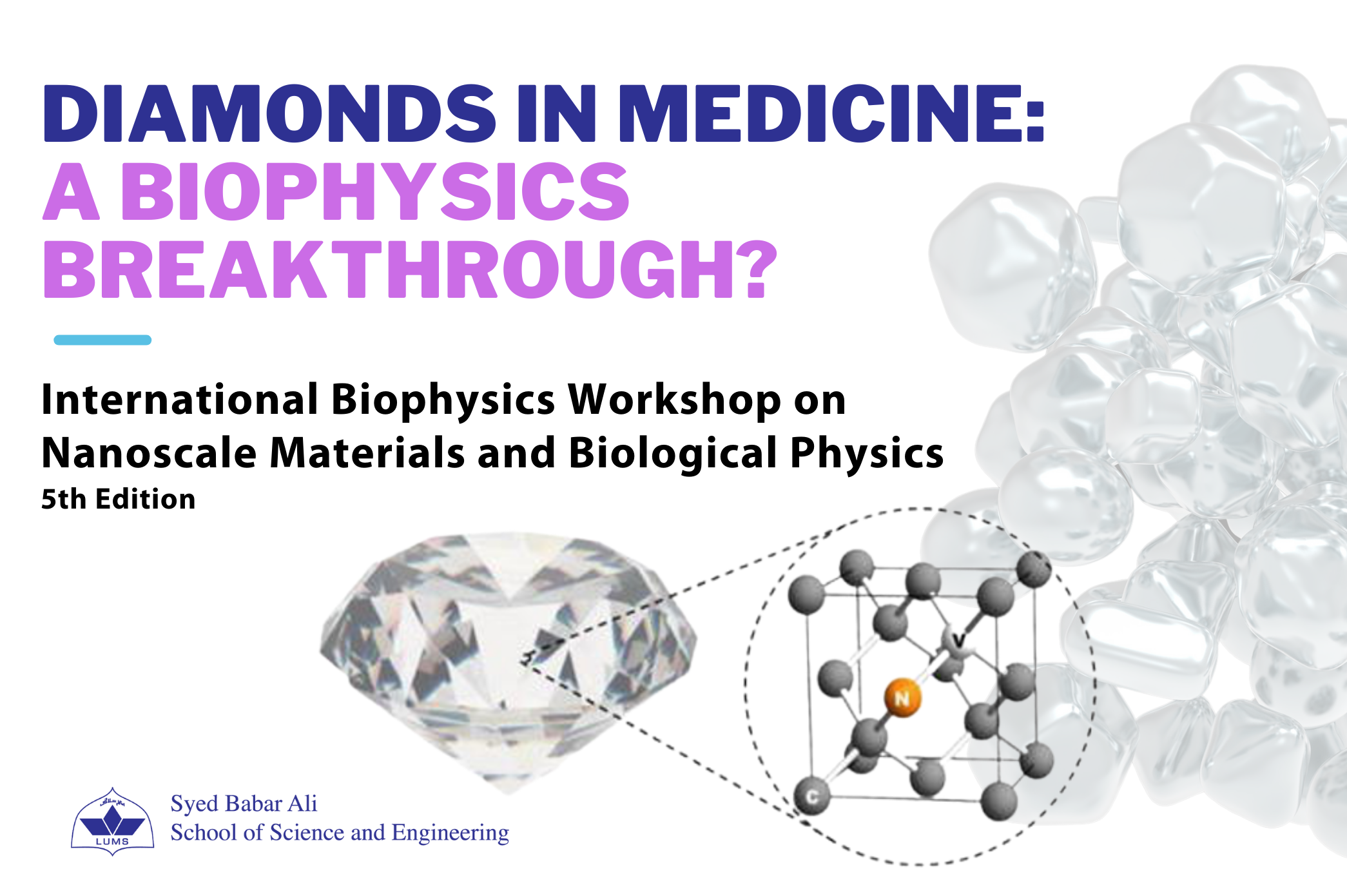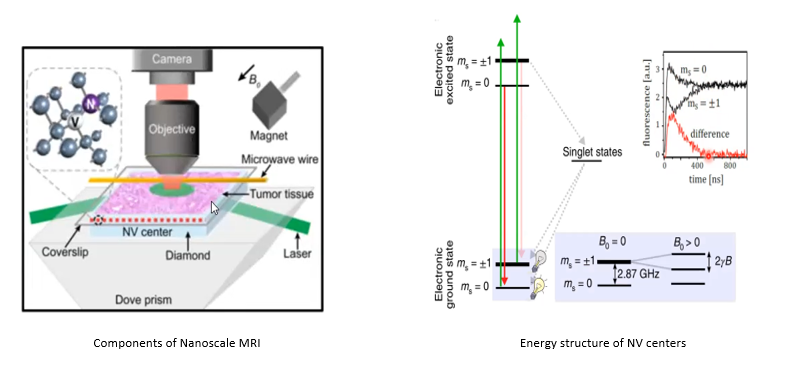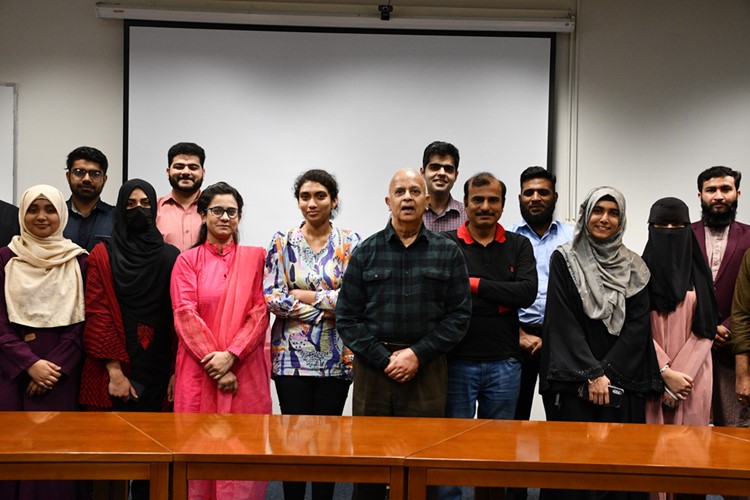
Diamonds in Medicine: A Biophysics Breakthrough?
In the words of the Dean of Syed Babar Ali School of Science and Engineering (SBASSE) at LUMS, Prof. Dr. Muhammad Sabieh Anwar,
"Coming from an engineering background, I couldn't enter any physics department in Pakistan. And then later, a Post-Doc in physics closed my doors for the engineering departments as well."
Interdisciplinary communication is where truly great ideas emerge. The overlap of information across different disciplines widens the knowledge domain and enables one to think critically. However, currently it is something seemingly foreign in Pakistan.
To promote the idea of interdisciplinarity, the fifth edition of the International Biophysics Workshop on Nanoscale Materials and Biological Physics aimed to unite individuals from diverse disciplines of science in Pakistan as well as abroad under one roof. Hosted by the Department of Physics at SBASSE, the workshop had a decent physical presence; however, a significant portion of the participants joined remotely via video conference link from as far away as Canada and even from different areas within Pakistan like Peshawar, from where physical attendance wasn’t feasible. Technology is undoubtedly fascinating in the way it bridges physical distances!

The workshop was structured into four sessions that took place over two days. The first session focused on Electromagnetic Nanoprobes, followed by sessions on Microfabrication, Nanoparticles and Neurophysiology. Dr. Shahid Khan, one of the founders of SBASSE and our host for the workshop, provided a comprehensive overview of concepts related to electromagnetic radiation. He highlighted the crucial role of physics in understanding the inner components of living organisms, even at nanoscale, and how it aids in medical diagnosis.
As an interdisciplinary science, biophysics applies approaches and methods traditionally used in physics to study biological phenomena. Its applications range from fundamental discoveries, such as the discovery of the double helix structure of DNA, to medical procedures, such as magnetic resonance imaging (MRI), that enable visualizing biological systems without destroying them. However, a downside of typical imaging methods is their limited resolution, i.e., often less than 1mm (about 0.04 in).
Now what if we want to observe something deeper?
There may be other solutions to this problem, but the one discussed in this workshop was something really unconventional and unexpected - Diamonds!
Dr. Nabeel Aslam, a Junior Professor at Technische Universität Braunschweig in Germany and a former Postdoctoral fellow in the Department of Physics at Harvard University, explained this in the second session of the workshop on Microfabrication. Prof. Nabeel was awarded the Feodor Lynen fellowship from the Alexander von Humboldt Foundation, and his research mainly focuses on quantum sensing and nuclear magnetic resonance (NMR).
We know diamond is a solid form of pure carbon . Interestingly, its crystals can have point defects where a nitrogen atom replaces a carbon atom in the diamond lattice, and an adjacent carbon atom is missing. These points are called "Nitrogen-Vacancy Centers," with a unique electronic structure that allows them to act as sensitive magnetic sensors. Now, when a magnetic field is applied to this center, it causes a change in the spin state of the nitrogen atom, which can be measured using a laser. MRI's primary goal is to measure the magnetic fields generated by the nuclei of atoms in the body, particularly hydrogen atoms, which are abundant in water molecules. NV centers can detect even the weakest magnetic fields a single proton generates. This sensitivity can allow for detecting tiny amounts of samples, making it particularly useful in applications where sensitivity and resolution are critical, such as in medical imaging.

Moreover, NV centers can be implanted in diamond nanocrystals, which can be injected into the body and used as MRI contrast agents, something Dr. Basit Yameen, from the Department of Chemistry and Chemical Engineering at LUMS, dwelled on during the third session on Nanoparticles. The centers can sense this magnetic field generated by the protons in the body, allowing for high-resolution imaging with improved contrast. Currently, this method is applied in limited places in the medical industry; however, it holds the potential to enhance MRI sensitivity and resolution, leading to better diagnostic capabilities and potentially new insights into biological processes in the future.
The biophysics workshop provided a unique opportunity for students and researchers to engage with innovative research happening at the intersection of biology and physics. Dr. Lukas Anneser, a Post-Doc at the Friedrich Miescher Institute for Biomedical Research in Switzerland, delivered a talk titled “There are other fish in the sea – social density perception in zebrafish”. The session on Neurophysiology concluded with a talk on synaptic and circuit mechanisms for signal propagation in multilayer neural networks by Dr. Alexander Reyes, Professor of Neural Science at New York University.
The workshop ended with the keynote speaker, Dr. Justin E. Molloy from Warwick Medical School in the UK, who introduced participants to the exciting field of single molecule biophysics and the emerging field of "mechano-biology". This field focuses on measuring how molecules move, change shape, and interact with each other under an applied force. Mechano-biology has the potential to transform our understanding of the complex behaviors and functions of biological systems at the most fundamental level.
As we continue to strive towards promoting interdisciplinary research in Pakistan, we hope that this workshop has inspired attendees to explore new research directions, collaborate across disciplines, and ultimately make breakthrough discoveries in the field of biophysics!


